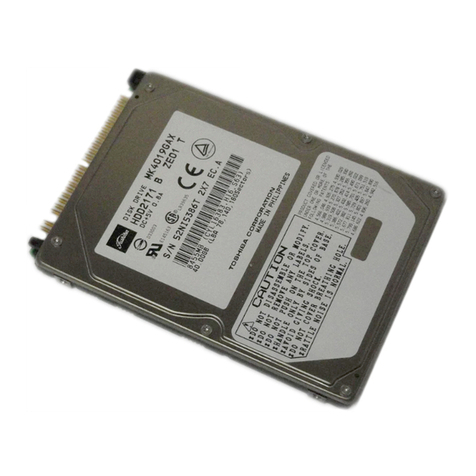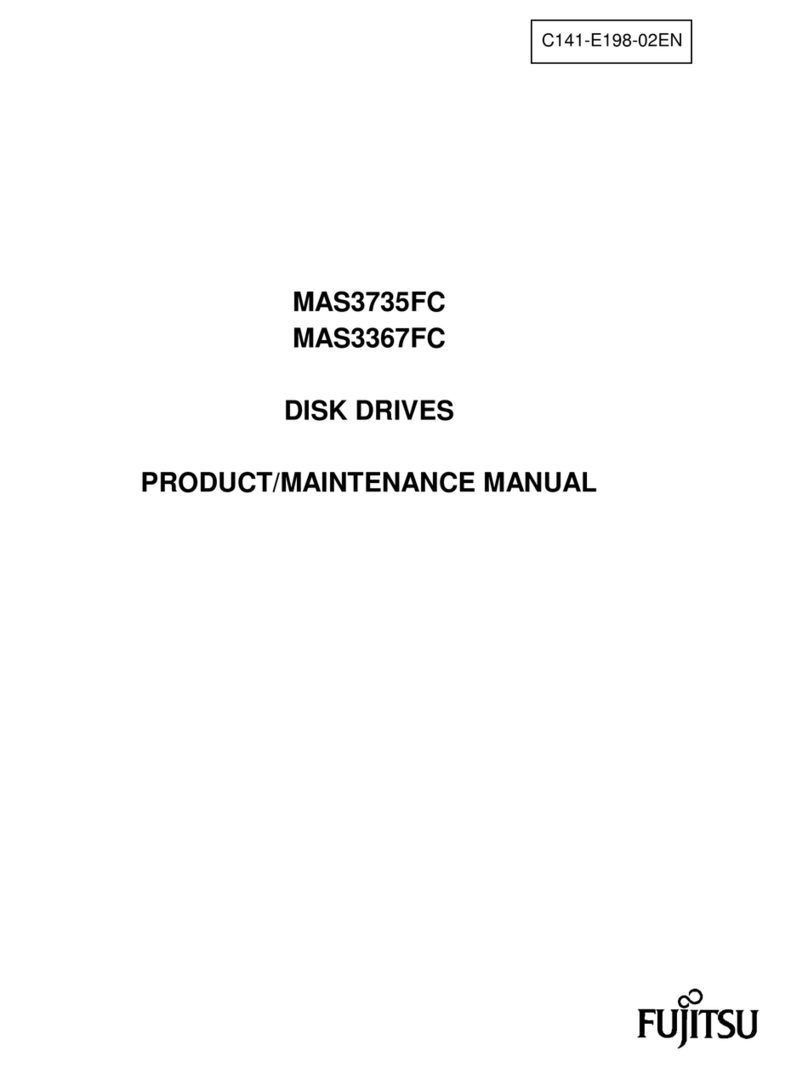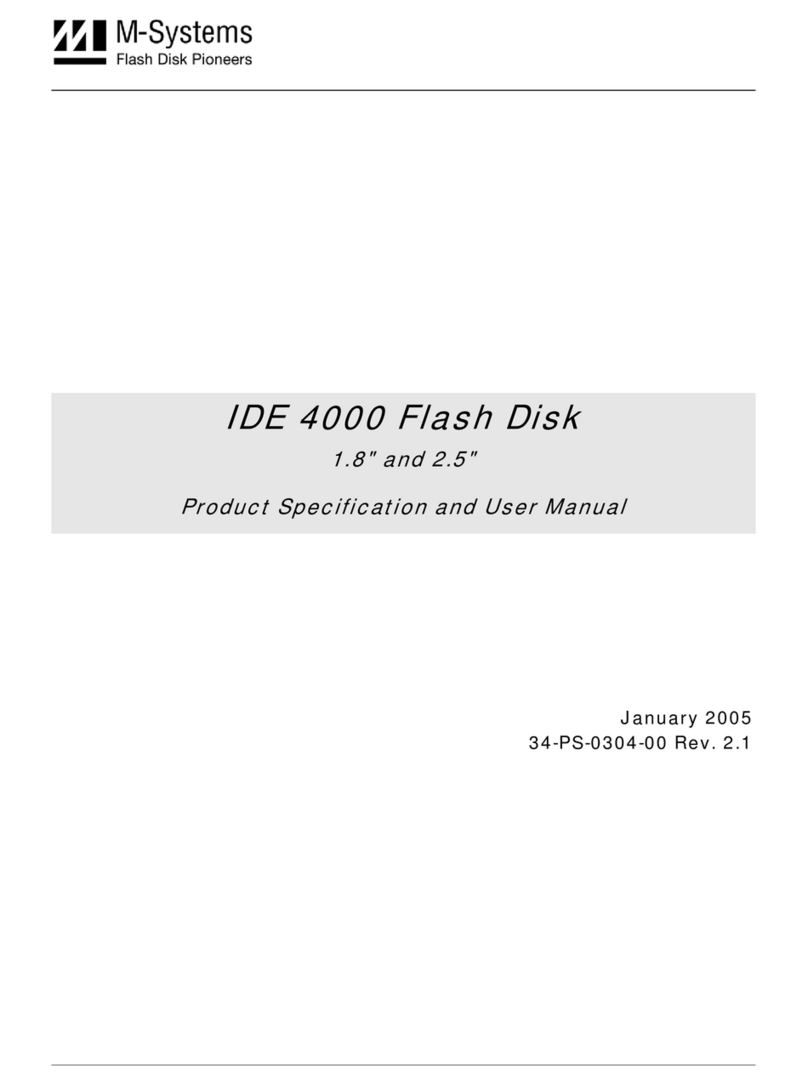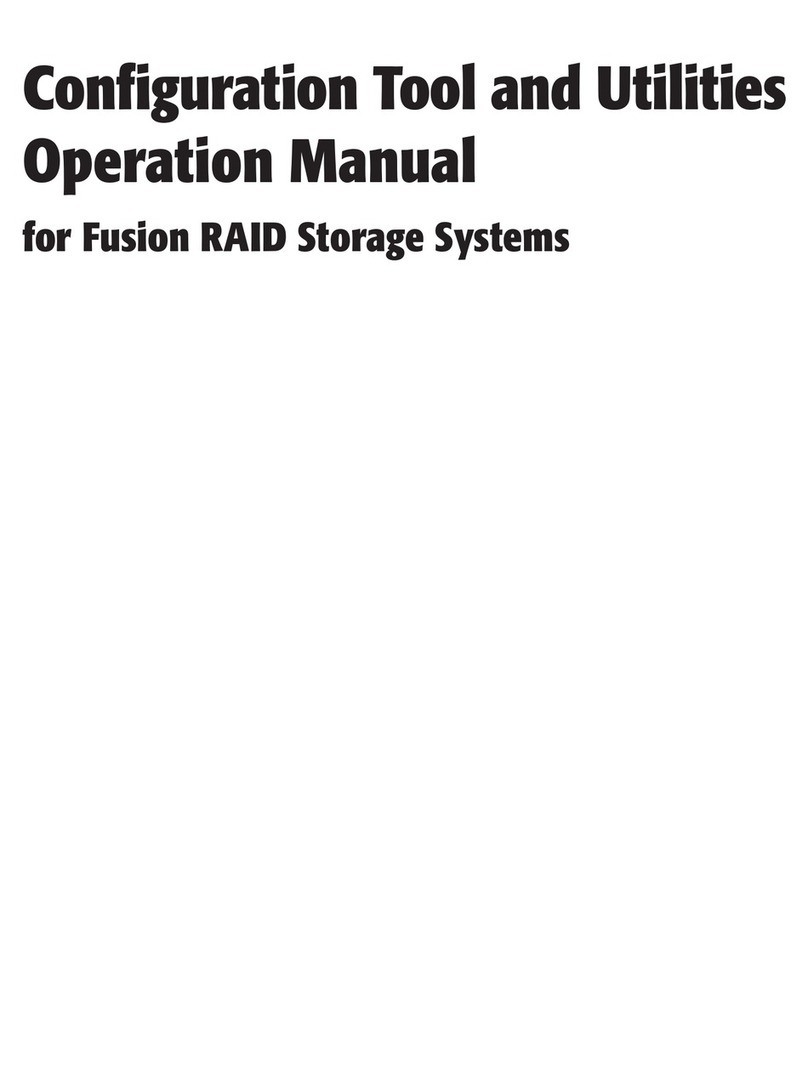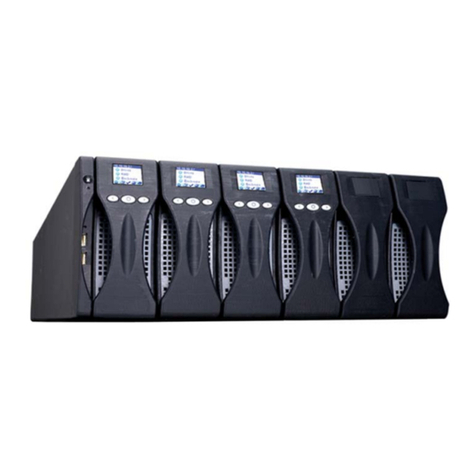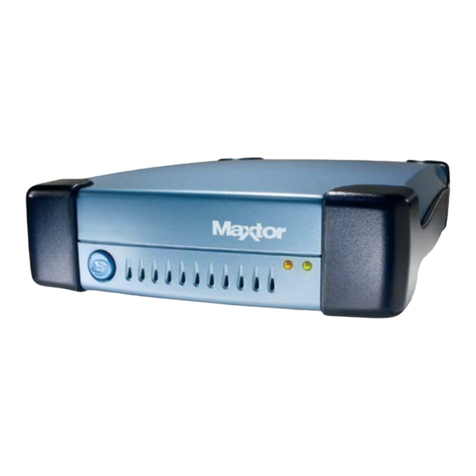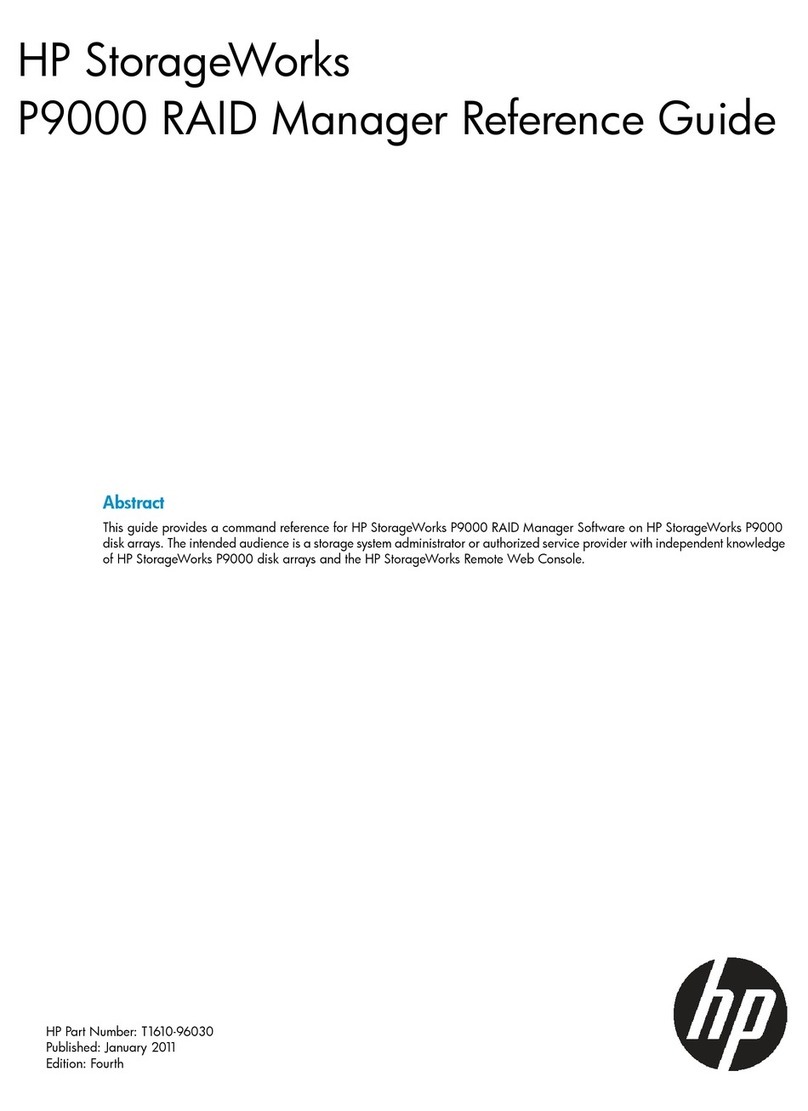SMA Solar Technology FLEXIBLE STORAGE SYSTEM User guide

SI44M-80H-13-BBF-IA-en-10 | Version 1.0ENGLISH
System Description
SMA FLEXIBLE STORAGE SYSTEM with Battery-
Backup Function
Battery-Backup Systems including Increased Self-Consumption with
SUNNY ISLAND 4.4M / 6.0H / 8.0H and SUNNY HOME MANAGER

Legal Provisions SMA Solar Technology AG
System DescriptionSI44M-80H-13-BBF-IA-en-102
Legal Provisions
The information contained in these documents is the property of SMA Solar Technology AG. No part of this document
may be reproduced, stored in a retrieval system, or transmitted, in any form or by any means, be it electronic,
mechanical, photographic, magnetic or otherwise, without the prior written permission of SMA Solar Technology AG.
Internal reproduction used solely for the purpose of product evaluation or other proper use is allowed and does not
require prior approval.
SMA Solar Technology AG makes no representations or warranties, express or implied, with respect to this
documentation or any of the equipment and/or software it may describe, including (with no limitation) any implied
warranties of utility, merchantability, or fitness for any particular purpose. All such representations or warranties are
expressly disclaimed. Neither SMA Solar Technology AG nor its distributors or dealers shall be liable for any indirect,
incidental, or consequential damages under any circumstances.
The exclusion of implied warranties may not apply in all cases under some statutes, and thus the above exclusion may
not apply.
Specifications are subject to change without notice. Every attempt has been made to make this document complete,
accurate and up-to-date. Readers are cautioned, however, that product improvements and field usage experience may
cause SMA Solar Technology AG to make changes to these specifications without advance notice, or per contract
provisions in those cases where a supply agreement requires advance notice. SMA Solar Technology AG shall not be
responsible for any damages, including indirect, incidental or consequential damages, caused by reliance on the
material presented, including, but not limited to, omissions, typographical errors, arithmetical errors or listing errors in
the content material.
SMA Warranty
You can download the current warranty conditions from the Internet at www.SMA-Solar.com.
Trademarks
All trademarks are recognized, even if not explicitly identified as such. Missing designations do not mean that a
product or brand is not a registered trademark.
SMA Solar Technology AG
Sonnenallee 1
34266 Niestetal
Germany
Tel. +49 561 9522-0
Fax +49 561 9522-100
www.SMA.de
Email: [email protected]
Status: 9/17/2019
Copyright © 2019 SMA Solar Technology AG. All rights reserved.

Table of Contents
SMA Solar Technology AG
System Description 3SI44M-80H-13-BBF-IA-en-10
Table of Contents
1 Information on this Document..................................................................................................... 5
1.1 Validity ............................................................................................................................................................. 5
1.2 Target Group ................................................................................................................................................... 5
1.3 Content and Structure of this Document......................................................................................................... 5
1.4 Levels of Warning Messages.......................................................................................................................... 5
1.5 Symbols in the Document................................................................................................................................ 6
1.6 Typographies in the Document....................................................................................................................... 6
1.7 Designation in the document .......................................................................................................................... 6
1.8 Explanation of Used Terms ............................................................................................................................. 7
1.9 Additional Information..................................................................................................................................... 7
2 Safety ............................................................................................................................................ 8
2.1 Intended Use.................................................................................................................................................... 8
2.2 IMPORTANT SAFETY INSTRUCTIONS......................................................................................................... 9
2.3 Battery Safety Information............................................................................................................................... 13
3 Functions and Design................................................................................................................... 15
3.1 Information on Battery-Backup Systems......................................................................................................... 15
3.2 Design and Functions of the Battery-Backup System..................................................................................... 15
3.3 Design and Functions of the Automatic Transfer Switch ............................................................................... 17
3.3.1 Devices of the Automatic Transfer Switch....................................................................................................... 17
3.3.2 Grid Disconnection .......................................................................................................................................... 18
3.3.3 Grounding Device for the Battery-Backup Grid............................................................................................. 19
3.4 Phase Coupling for Single-Phase Battery-Backup Systems ........................................................................... 19
3.5 Requirements of VDE Application Guide 2510-2......................................................................................... 20
3.6 Communication................................................................................................................................................ 20
4 Battery-Backup Systems With All-Pole Disconnection............................................................... 21
4.1 Single-phase battery-backup system with all-pole disconnection ................................................................. 21
4.1.1 Automatic Transfer Switching Device for Single-Phase Battery-Backup System with All-Pole
Disconnection................................................................................................................................................... 21
4.1.2 Circuitry Overview for single-Phase Battery-Backup System with All-Pole Disconnection ........................... 22
4.1.3 Connection of the Sunny Island ...................................................................................................................... 23
4.2 Three-Phase Battery-Backup System with All-Pole Disconnection ................................................................. 25
4.2.1 Automatic Transfer Switching Device for Three-Phase Battery-Backup System with All-Pole
Disconnection................................................................................................................................................... 25
4.2.2 Circuitry Overview for Three-Phase Battery-Backup System with All-Pole Disconnection............................ 26
4.2.3 Connecting the Master with All-Pole Disconnection ...................................................................................... 27
4.2.4 Connecting the Slaves ..................................................................................................................................... 29
5 Battery-Backup Systems Without All-Pole Disconnection ......................................................... 31
5.1 Single-Phase Battery-Backup System without All-Pole Disconnection........................................................... 31
5.1.1 Automatic Transfer Switching Device for Single-Phase Battery-Backup System without All-Pole
Disconnection................................................................................................................................................... 31
5.1.2 Circuitry Overview for Single-Phase Battery-Backup System without All-Pole Disconnection...................... 32
5.1.3 Connection of the Sunny Island ...................................................................................................................... 33
5.2 Three-Phase Battery-Backup System without All-Pole Disconnection............................................................ 35
5.2.1 Automatic Transfer Switching Device for Three-Phase Battery-Backup System without All-Pole
Disconnection................................................................................................................................................... 35
5.2.2 Circuitry Overview for Three-Phase Battery-Backup System without All-Pole Disconnection....................... 36
5.2.3 Connecting the Master without All-Pole Disconnection ................................................................................. 37

Table of Contents SMA Solar Technology AG
System DescriptionSI44M-80H-13-BBF-IA-en-104
5.2.4 Connecting the Slaves ..................................................................................................................................... 39
6 Commissioning ............................................................................................................................. 41
6.1 Commissioning Procedure............................................................................................................................... 41
6.2 Testing the Automatic Transfer Switch Function............................................................................................. 41
6.3 Adjusting the Configuration of the Sunny Island ........................................................................................... 44
6.4 Adjusting the Configuration of the PV Inverters ............................................................................................. 44
6.5 Activating Phase Coupling in Single-Phase Battery-Backup Systems ........................................................... 45
6.6 Commissioning a System With Increased Self-Consumption........................................................................ 45
6.7 Commissioning a System without Increased Self-Consumption.................................................................... 47
7 Only for Belgium: connection of battery-backup systems with Sunny Island......................... 48
7.1 Automatic Transfer Switching Device for Single-Phase Battery-Backup System in Belgium........................ 48
7.2 Circuitry Overview for Single-Phase Battery-Backup System in Belgium...................................................... 49
7.3 Automatic Transfer Switching Device for Three-Phase Battery-Backup System in Belgium......................... 50
7.4 Circuitry Overview for Three-Phase Battery-Backup System in Belgium....................................................... 51
8 Contact .......................................................................................................................................... 52

1 Information on this Document
SMA Solar Technology AG
System Description 5SI44M-80H-13-BBF-IA-en-10
1 Information on this Document
1.1 Validity
This document is valid for the SMAFlexibleStorageSystem with battery-backup function with the following device
types:
• SI4.4M-13 (SunnyIsland 4.4M) from firmware version 3.01.xx.R
• SI6.0H-13 (SunnyIsland 6.0H) from firmware version 3.01.xx.R
• SI8.0H-13 (SunnyIsland 8.0H) from firmware version 3.01.xx.R
• HM-20 (SunnyHomeManager 2.0) from firmware version 2.00.00.R
1.2 Target Group
The tasks described in this document must only be performed by qualified persons. Qualified persons must have the
following skills:
• Knowledge of how an inverter works and is operated
• Knowledge of how batteries work and are operated
• Training in the installation and commissioning of electrical devices and installations
• Knowledge of all applicable laws, standards and directives
• Knowledge of and compliance with this document and all safety information
• Knowledge of and compliance with the documents of the battery manufacturer with all safety information
1.3 Content and Structure of this Document
This document summarizes the specific information for the SMA Flexible Storage System with battery-backup function
(battery-backup system).
Circuitry overviews provide the basic principle of how an system must be connected. The structure of this document
specifies the chronological sequence for configuration and commissioning.
This document supplements the documents that are enclosed with each product and does not replace any locally
applicable codes or standards. Read and observe all documents supplied with the product.
Illustrations in this document are reduced to the essential information and may deviate from the real product.
1.4 Levels of Warning Messages
The following levels of warning messages may occur when handling the product.
DANGER
Indicates a hazardous situation which, if not avoided, will result in death or serious injury.
WARNING
Indicates a hazardous situation which, if not avoided, could result in death or serious injury.
CAUTION
Indicates a hazardous situation which, if not avoided, could result in minor or moderate injury.
NOTICE
Indicates a situation which, if not avoided, can result in property damage.

1 Information on this Document SMA Solar Technology AG
System DescriptionSI44M-80H-13-BBF-IA-en-106
1.5 Symbols in the Document
Symbol Explanation
Information that is important for a specific topic or goal, but is not safety-relevant
☐
Indicates a requirement for meeting a specific goal
☑
Desired result
✖
A problem that might occur
Example
This information is relevant for systems which are to be operated in parallel with utility grid.
(e.g. SMAFlexibleStorageSystem).
Content is relevant for off-grid systems.
1.6 Typographies in the Document
Typography Use Example
bold • Messages
• Terminals
• Elements on a user interface
• Elements to be selected
• Elements to be entered
• Connect the insulated conductors
to the terminals X703:1 to
X703:6.
• Enter 10 in the field Minutes.
>• Connects several elements to be
selected • Select Settings > Date.
[Button]
[Key]
• Button or key to be selected or pressed • Select [Enter].
# • Placeholder for variable components
(e.g., parameter names) • Parameter WCtlHz.Hz#
1.7 Designation in the document
Complete designation Designation in this document
SMAFlexibleStorageSystem with Battery-Backup Func-
tion Battery-backup system
SMA Speedwire Speedwire
Sunny Boy, Sunny Tripower PV inverter
SunnyPlaces, SunnyPortal, SunnyHomeManager Communication product

1 Information on this Document
SMA Solar Technology AG
System Description 7SI44M-80H-13-BBF-IA-en-10
1.8 Explanation of Used Terms
Term Explanation
Grid failure Utility grid failure or deviation from the country-specific thresholds for voltage
and frequency
Automatic transfer switch with
battery-backup function disconnects the battery-backup grid from the utility grid in the event of grid fail-
ure.
1.9 Additional Information
For more information, please go to www.SMA-Solar.com.
Title and information content Type of information
Mounting, installation, commissioning, operation, configuration, troubleshooting
and decommissioning of the inverter Operating manual
"Parameters and Measured Values"
Overview of all inverter operating parameters and their configuration options
Technical Information
"SMASmartHome"
The System Solution for Greater Independence
Planning Guidelines
"SMAFlexibleStorageSystem with Battery Backup Function" Planning Guidelines
SUNNYISLAND 4.0M / 6.0H / 8.0H Operating manual

2 Safety SMA Solar Technology AG
System DescriptionSI44M-80H-13-BBF-IA-en-108
2 Safety
2.1 Intended Use
An SMAFlexibleStorageSystem with battery-backup function (battery-backup system) takes care of the uninterrupted
supply of the loads with electricity during a grid failure. An automatic transfer switching device disconnects the
household grid with the PV system from the utility grid. When this happens, a battery inverter forms a battery-backup
grid and the PV system can supply the loads. When the energy demand of the active loads exceeds the current power
of the PV system, the battery will provide the energy shortfall.
Loads connected to the SunnyIsland must have an CE, RCM or UL identification label.
The product is not suitable for supplying life-sustaining medical devices. A power outage must not lead to personal
injury.
Grid feed-in and purchased electricity are recorded with an SMAEnergyMeter only. An SMAEnergyMeter does not
replace the energy meter of the electric utility company.
The battery-backup system must only be used in countries for which it is licensed or for which it is released by SMA
Solar Technology AG and the grid operator. In order to meet the technical connection requirements of the grid
operator and the locally applicable standards and directives, you must install the battery-backup system either with or
without all-pole disconnection:
• Battery-backup system with all-pole disconnection
In the event of grid failure, a tie switch disconnects all line conductors and the neutral conductor from the utility
grid. If the technical connection requirements of the grid operator or the local standards and directives call for or
allow all-pole disconnection, you must install this basic structure, e.g. in Belgium, Denmark, Germany, Austria and
Switzerland.
• Battery-backup system without all-pole disconnection
In the event of grid failure, a tie switch disconnects all line conductors from the utility grid. The neutral conductor of
the battery-backup grid remains permanently connected to the utility grid. If the technical connection requirements
of the grid operator or the local standards and directives prohibit disconnection of the neutral conductor, you must
install this basic structure.
Single-phase clusters are not permitted. In a three-phase cluster, only device types with the same output power may be
installed. This means that the device types, such as SI6.0H-12 and SI6.0H-13, may be combined within a cluster. In
contrast, device types with different outputs (e.g. SI6.0H-13 and SI8.0H-13) may not be combined. The cluster master
must always be an SI4.4M-13 / SI6.0H-13 / SI8.0H-13. It must be equipped with the latest firmware version.
Single-phase battery-backup grids can be connected to three-phase utility grids. In a single-phase battery-backup
system, a grid failure is only recognized at the line conductor that is connected to the SunnyIsland. In the event of grid
failure, only single-phase PV inverters can feed into a single-phase battery-backup grid.
Only applies in Belgium: If the utility grid functions as an IT system that is grounded to the neutral point of the source,
the connected battery-backup system must be single-phase.
With phase coupling, all the loads in the battery-backup grid must be single-phase. No more than one SunnyIsland
may be connected in a single-phase battery-backup system.
The battery-backup system must be equipped with an automatic transfer switch (see planning guidelines
"SMAFlexibleStorageSystem with Battery Backup Function" at www.SMA-Solar.com). This automatic transfer switch
is not part of the SunnyIsland scope of delivery.
The automatic transfer switch is not a distribution board for the loads or the PV system. The loads and the PV system
must be secured with protective devices in accordance with the local standards and directives. Grid-forming voltage
sources (e.g. generators) must not be connected to the battery-backup system. The equipment or devices of the
automatic transfer switch must satisfy protection class II and be operable without prior knowledge of electrical
engineering.
The tie switch in the automatic transfer switch must have an ampacity that is designed for at least the operating range
of the upstream fuse.

2 Safety
SMA Solar Technology AG
System Description 9SI44M-80H-13-BBF-IA-en-10
The connected PV inverters must be suitable for use in battery-backup systems. In addition, the power of the PV system
must be appropriate for the system (see planning guidelines "SMAFlexibleStorageSystem with Battery Backup
Function" at www.SMA-Solar.com).
In a three-phase battery-backup system, both single-phase and three-phase PV inverters can be connected.
The entire battery voltage range must be completely within the permissible DC input voltage range of the SunnyIsland.
The maximum permissible DC input voltage of the SunnyIsland must not be exceeded. A battery fuse must be installed
between the battery and the SunnyIsland.
With lead-acid batteries, the battery room must be ventilated in accordance with the requirements of the battery
manufacturer and with the locally applicable standards and directives (see documentation of the battery
manufacturer).
The following conditions must be satisfied for lithium-ion batteries:
• The lithium-ion battery must comply with the locally applicable standards and directives and must be intrinsically
safe.
• The battery management of the lithium-ion battery used must be compatible with the SunnyIsland (see the
technical information at “List of Approved Batteries”).
• The lithium-ion battery must be able to supply enough current at maximum output power of the SunnyIsland (for
technical data see the SunnyIsland operating manual).
An DC supply grid may not be established with the SunnyIsland.
Use SMA products only in accordance with the information provided in the enclosed documentation and with the
locally applicable laws, regulations, standards and directives. Any other application may cause personal injury or
property damage.
Alterations to the SMA products, e.g., changes or modifications, are only permitted with the express written permission
of SMA Solar Technology AG. Unauthorized alterations will void guarantee and warranty claims and in most cases
terminate the operating license. SMA Solar Technology AG shall not be held liable for any damage caused by such
changes.
Any use of the product other than that described in the Intended Use section does not qualify as the intended use.
The enclosed documentation is an integral part of this product. Keep the documentation in a convenient, dry place for
future reference and observe all instructions contained therein.
This document does not replace and is not intended to replace any local, state, provincial, federal or national laws,
regulations or codes applicable to the installation, electrical safety and use of the product. SMA Solar Technology AG
assumes no responsibility for the compliance or non-compliance with such laws or codes in connection with the
installation of the product.
2.2 IMPORTANT SAFETY INSTRUCTIONS
SAVE THESE INSTRUCTIONS
This section contains safety information that must be observed at all times when working.
The product has been designed and tested in accordance with international safety requirements. As with all electrical
or electronical devices, there are residual risks despite careful construction. To prevent personal injury and property
damage and to ensure long-term operation of the product, read this section carefully and observe all safety
information at all times.

2 Safety SMA Solar Technology AG
System DescriptionSI44M-80H-13-BBF-IA-en-1010
DANGER
Danger to life due to electric shock when live components or cables are touched
High voltages are present in the conductive components or cables of the product. Touching live parts and cables
results in death or lethal injuries due to electric shock.
• Do not touch non-insulated parts or cables.
• Disconnect the system from voltage sources and make sure it cannot be reconnected before working on the
device.
• Observe all safety information on components associated with the product.
• Wear suitable personal protective equipment for all work on the product.
DANGER
Danger to life due to electric shock in case of overvoltages and if surge protection is missing
Overvoltages (e.g. in the event of a flash of lightning) can be further conducted into the building and to other
connected devices in the same network via the network cables or other data cables if there is no surge protection.
Touching live parts and cables results in death or lethal injuries due to electric shock.
• Ensure that all devices in the same network and the battery are integrated into the existing surge protection.
• When laying the network cables or other data cables outdoors, it must be ensured that a suitable surge
protection device is provided at the transition point of the cable from the product or the battery outdoors to the
inside of a building.
DANGER
Danger to life due to electric shock in case of overvoltages and unsuitable loads
Overvoltages of up to 1500V can occur in the stand-alone grid and in the battery-backup grid. If the loads are not
suitable for these overvoltages or are not safe to operate, a voltage that poses a danger to life may be present on
accessible parts or cables. Touching live parts and cables results in death or lethal injuries due to electric shock.
• Only connect loads that have a CE, RCM or UL designation. These loads are suitable for overvoltages of up to
1500V.
• Operate the loads only when they are technically faultless and in an operationally safe state.
• Check the loads regularly for visible damage.
DANGER
Danger to life due to electric shock when operating a damaged product
Operating a damaged product can lead to hazardous situations since high voltages can be present on accessible
product parts. Touching live parts and cables results in death or lethal injuries due to electric shock.
• Only operate the system when it is in a flawless technical condition and safe to operate.
• Check the system regularly for visible damage.
• Make sure that all external safety equipment is freely accessible at all times.
• Make sure that all safety equipment is in good working order.
• Wear suitable personal protective equipment for all work on the product.

2 Safety
SMA Solar Technology AG
System Description 11SI44M-80H-13-BBF-IA-en-10
WARNING
Danger to life due to fire or explosion
In rare cases, an explosive gas mixture can be generated inside the inverter under fault conditions. In this state,
switching operations can cause a fire inside the inverter or explosion. Death or lethal injuries due to hot or flying
debris can result.
• In the event of a fault, do not perform any direct actions on the inverter.
• Ensure that unauthorized persons have no access to the inverter.
• Disconnect the battery from the product via an external disconnection device.
• Disconnect the AC circuit breaker, or keep it disconnected in case it has already tripped, and secure it against
reconnection.
• Only perform work on the inverter (e.g., troubleshooting, repair work) when wearing personal protective
equipment for handling of hazardous substances (e.g., safety gloves, eye and face protection, respiratory
protection).
WARNING
Risk of injury due to toxic substances, gases and dusts.
In rare cases, damages to electronic components can result in the formation of toxic substances, gases or dusts
inside the inverter. Touching toxic substances and inhaling toxic gases and dusts can cause skin irritation, burns or
poisoning, trouble breathing and nausea.
• Only perform work on the inverter (e.g., troubleshooting, repair work) when wearing personal protective
equipment for handling of hazardous substances (e.g., safety gloves, eye and face protection, respiratory
protection).
• Ensure that unauthorized persons have no access to the inverter.
WARNING
Danger to life from electric shock due to circuit breakers that cannot be tripped
In off-grid systems and battery-backup systems, the SunnyIsland can only trip circuit breakers up to a certain
tripping characteristic. Circuit breakers with a higher operating current cannot be tripped. Under fault conditions, a
voltage that poses a danger to life may be present on accessible parts for several seconds. Touching live
components can result in death or serious injury due to electric shock.
• SI4.4M-13: Check whether a circuit breaker has a higher trip characteristic than B6 (B6A).
• SI6.0H-13 and SI8.0H-13: Check whether a circuit breaker has a higher trip characteristic than B16 (B16A) or
C6 (C6A).
• If a circuit breaker has a higher trip characteristic than the specified circuit breakers that can be tripped, you
should also install a residual-current device of type A.
CAUTION
Risk of burns due to short-circuit currents on the disconnected inverter
The capacitors in the DC input area of the inverter store energy. After the battery is isolated from the inverter,
battery voltage is still temporarily present at the DC terminal. A short circuit at the DC terminal of the inverter can
lead to burns and may damage the inverter.
• Wait 15minutes before performing any work at the DC terminal or on the DC cables. This allows the
capacitors to discharge.

2 Safety SMA Solar Technology AG
System DescriptionSI44M-80H-13-BBF-IA-en-1012
CAUTION
Risk of burns due to hot enclosure parts
Some parts of the enclosure can get hot during operation.
• Mount the inverter in such a way that it cannot be touched inadvertently during operation.
NOTICE
Damage to the system due to sand, dust and moisture ingress
Sand, dust and moisture penetration can damage the system and impair its functionality.
• Only open the product if the humidity is within the thresholds and the environment is free of sand and dust.
• Do not open the product during a dust storm or precipitation.
NOTICE
Damage to the inverter due to electrostatic discharge
Touching electronic components can cause damage to or destroy the inverter through electrostatic discharge.
• Ground yourself before touching any component.
NOTICE
Damage to the enclosure seal in subfreezing conditions
If you open the product when temperatures are below freezing, the enclosure seals can be damaged. Moisture can
penetrate the product and damage it.
• Only open the product if the ambient temperature is not below -5°C.
• If a layer of ice has formed on the enclosure seal when temperatures are below freezing, remove it prior to
opening the product (e.g. by melting the ice with warm air).
NOTICE
High costs due to inappropriate Internet tariff
Depending on use, the data volume of the product transferred via the Internet may vary in size. The data volume
depends, for example, on the number of inverters in the system, the frequency of device updates, the frequency of
data transfer to SunnyPortal or the use of FTP push. High costs for the Internet connection can be the result.
• SMA Solar Technology AG recommends using an Internet flat rate.

2 Safety
SMA Solar Technology AG
System Description 13SI44M-80H-13-BBF-IA-en-10
The inverter supports different firmware versions that are suitable for different systems.
Inverters using firmware version ≤2.99.99.R are suitable for off-grid systems and systems that are not subject to
the European grid connection conditions in accordance with Regulation (EU) 2016/631 for establishing a
network code (also known as RfG). In addition, inverters with firmware version ≤2.99.99.R may be used in
systems that have been commissioned before April 27, 2019, and that are subject to the grid connection
conditions of VDE-AR-N 4105:2011-08.
Inverters using a firmware version ≥3.00.00.R are only suitable for systems that are operated in parallel with the
utility grid (e.g. SMAFlexibleStorageSystem). The firmware version ≥3.00.00.R complies with VDE-AR-N
4105-11:2018, EN50549-1:2018, C10/11:2018 and EREC G98:2018/G99:2018 of the European grid
connection conditions in accordance with Regulation (EU) 2016/631 for establishing a network code (also
known as RfG), valid from April 27, 2019 within the EU.
Inverters with a firmware version ≤2.99.99.R can be identified by the imprint 2:Off-Grid on the box label.
Invertes with a firmware version ≥3.00.00.R can be identified by the imprint 1:On-Grid on the box label.
• Ensure that the inverter is equipped with a firmware version that are suitable for the respective system.
Change to the names and units of grid parameters to comply with the grid-connection
requirements in accordance with Regulation (EU) 2016/631 (valid from April 27, 2019)
To comply with the EU grid-connection requirements (valid from April 27, 2019) the names and units of grid
parameters were changed. The change is valid from firmware version ≥3.00.00.R. Names and units of grid
parameters for inverters with firmware version ≤2.99.99.R are not affected by this change and remain valid.
2.3 Battery Safety Information
This section contains safety information that must be observed at all times when working on or with batteries.
To prevent personal injury or property damage and to ensure long-term operation of the batteries, read this section
carefully and observe all safety information at all times.
WARNING
Danger to life due to incompatible lithium-ion battery
An incompatible lithium-ion battery can lead to a fire or an explosion. With incompatible lithium-ion batteries, it is
not ensured that battery management is intrinsically safe and will protect the battery.
• Ensure that the lithium-ion batteries are approved for use with the SunnyIsland (see technical information “List
of Approved Batteries” at www.SMA-Solar.com).
• If no lithium-ion batteries approved for the inverter can be used, lead-acid batteries can be used.
• Verify that the battery complies with locally applicable standards and directives and is intrinsically safe.
WARNING
Danger to life due to explosive gases
Explosive gases may escape from the battery and cause an explosion.
• Protect the battery environment from open flames, embers and sparks.
• Install, operate and maintain the battery in accordance with the manufacturer’s specifications.
• Do not burn the battery and do not heat it beyond the permitted temperature.
• Additional measures for lead-acid batteries: Ensure that the battery room is sufficiently ventilated.

2 Safety SMA Solar Technology AG
System DescriptionSI44M-80H-13-BBF-IA-en-1014
WARNING
Chemical burns due to battery electrolyte
If handled inappropriately, battery electrolyte can leak from the battery and cause irritation to the eyes, respiratory
system and skin.
• Install, operate, maintain and dispose of the battery according to the manufacturer’s specifications.
• Whenever working on the battery, wear suitable personal protective equipment such as rubber gloves, an
apron, rubber boots and goggles.
• Rinse acid splashes thoroughly for a long time with clear water, and consult a doctor immediately.
• If acid fumes have been inhaled, consult a doctor immediately.
WARNING
Danger to life due to burns caused by electric arcs through short-circuit currents
Short-circuit currents in the battery can cause heat build-up and electric arcs. Heat build-up and electric arcs may
result in lethal injuries due to burns.
• Remove watches, rings and other metal objects prior to carrying out any work on the battery.
• Use insulated tools for all work on the battery.
• Do not place tools or metal parts on the battery.
• Observe all safety information of the battery manufacturer.
CAUTION
Risk of burns due to hot battery components
Improper battery connection may result in excessively high transition resistances. Excessive transition resistances
give rise to localized heat build-up.
• Ensure that all pole connectors are connected with the connecting torque specified by the battery
manufacturer.
• Ensure that all DC cables are connected with the connecting torque specified by the battery manufacturer.
NOTICE
Damage to the battery due to incorrect settings
The set battery parameters influence the charging behavior of the inverter. The battery can be damaged by
incorrect settings of the battery type, nominal voltage and capacity parameters.
• Set the correct battery type as well as the correct values for nominal voltage and battery capacity when
configuring.
• Ensure that the values recommended by the manufacturer are set for the battery (refer to the technical data of
the battery in the manufacturer documentation).

3 Functions and Design
SMA Solar Technology AG
System Description 15SI44M-80H-13-BBF-IA-en-10
3 Functions and Design
3.1 Information on Battery-Backup Systems
Wiring and connection of automatic transfer switches for single-phase or three-phase battery-
backup systems
• Do not bridge the neutral conductors of connections X1 to X5 in the automatic transfer switch. If the neutral
conductor connections are bridged, residual-current devices could trip accidentally.
• Label the equipment and devices of the automatic transfer switch in accordance with the schematic diagrams.
This will facilitate installation, commissioning and assistance in case servicing is required.
Connection of automatic transfer switches for single-phase battery-backup systems
In single-phase battery-backup systems, only the line conductor of the SunnyIsland that is connected to the circuit
breaker F1 of the automatic transfer switch is monitored for grid failure. If terminal AC2 Gen/Grid L is connected
to another line conductor, the battery-backup system is not able to synchronize with the utility grid following a grid
failure.
• With single-phase battery-backup systems, connect circuit breaker F1 and terminal AC2Gen/GridL of the
SunnyIsland to the same line conductor, e.g. to L1 (for a single-phase battery-backup system with an all-pole
disconnection function).
• Connect the PV inverter and the SunnyIsland to the same line conductor if possible. This way, in the event of
grid failure, the PV inverters are supplied with voltage directly and then can feed in even if phase coupling is
deactivated.
3.2 Design and Functions of the Battery-Backup System
GRID
DISCONNECTION
UTILITY GRID
PV INVERTER
PV ARRAY
LOADS
AC Power cable
AUTOMATIC TRANSFER SWITCH
DISTRIBUTION
BOARD
GROUNDING
DEVICE
DC Power cable
BATTERY INVERTER
Figure 1: Overview of a single-phase battery-backup system

3 Functions and Design SMA Solar Technology AG
System DescriptionSI44M-80H-13-BBF-IA-en-1016
An SMAFlexibleStorageSystem with battery-backup function (battery-backup system) takes care of the uninterrupted
supply of the loads with electricity during a grid failure. An automatic transfer switching device disconnects the
household grid with the PV system from the utility grid. When this happens, a battery inverter forms a battery-backup
grid and the PV system can supply the loads. When the energy demand of the active loads exceeds the current power
of the PV system, the battery will provide the energy shortfall.
When the utility grid is available again, the battery-backup system synchronizes the battery-backup grid with the utility
grid. Following successful synchronization, the automatic transfer switch connects the battery-backup grid to the utility
grid. If the automatic transfer switch is connected to the utility grid, the battery-backup system uses the battery for
increased self-consumption.
You can set up and wire the automatic transfer switch yourself or acquire it pre-wired from another provider (see
Planning Guidelines "SMAFlexibleStorageSystem with Battery Backup Function" at www.SMA-Solar.com).
Connection of loads and the PV system
The automatic transfer switch is not a distribution board for the loads or the PV system. You must also install the
necessary protective devices for the loads and the PV system.

3 Functions and Design
SMA Solar Technology AG
System Description 17SI44M-80H-13-BBF-IA-en-10
3.3 Design and Functions of the Automatic Transfer Switch
3.3.1 Devices of the Automatic Transfer Switch
F6
(C32A)
Q3
Q2 Q4Q4
Q3Q3
Q4
Q6
F5 3
*
F3
X3 L1 NPE
Q4Q4
Q3Q3
Q2
3
F1*
X5 L1 N1234
F4
(C32A)
2
*
SUNNY HOME
MANAGER 2.0
(C32A)
L1 N12
X4
X2
PE
N
L3
L2
L1
X1
PE
N
L3
L2
L1
Phase coupling for
single-phase operation
Grid disconnection
optional
Grounding device
1
F2*
(40A/0,03A
Type A)
F7
(40A/0,03A
Type A)
1
* Only when connecting to a TT grid, the line conductor and the neutral conductor must be fused.
2
* Not required for systems without increased self-consumption.
3
* Requirements for thermal fuse used: 1 A, nominal cold resistance of at least 0.2 Ω and melting integral max. 1A2s.
The indicated values in brackets are recommended by SMA Solar Technology AG. The electrical devices must be
designed in accordance with the locally applicable standards and directives.
Figure 2: Schematic diagram of a single-phase automatic transfer switch with all-pole disconnection (example)
An automatic transfer switch provides the following functions:
• Grid disconnection isolates the battery-backup grid from the utility grid.
• The grounding device grounds the battery-backup grid after it has been disconnected from the utility grid.
The grounding device is only required in systems with all-pole disconnection.

3 Functions and Design SMA Solar Technology AG
System DescriptionSI44M-80H-13-BBF-IA-en-1018
• The phase coupling connects the line conductors of the battery-backup system to a single-phase distribution grid.
The phase coupling is a function for single-phase battery-backup systems if the installation of the battery-backup
grid is three-phase.
• The SunnyHomeManager 2.0 measures the grid feed-in and purchased electricity.
The SunnyHomeManager 2.0 is only required in systems for increased self-consumption.
3.3.2 Grid Disconnection
Within the automatic transfer switch, a tie switch disconnects the battery-backup grid from the utility grid. The
conditions at the tie switch differ depending on the installation site. SMA Solar Technology AG offers two basic
structures for grid disconnection, which differ as far as the tie switch is concerned:
• Grid disconnection with all-pole disconnection of the battery-backup grid from the utility grid
In the event of grid failure, a tie switch disconnects all line conductors and the neutral conductor from the utility
grid. If the technical connection requirements of the grid operator or the local standards and directives call for or
allow all-pole disconnection, you must install this basic structure. You must install all-pole disconnection in the
following countries:
– Belgium
– Denmark
– Germany
– Austria
– Switzerland
• Grid disconnection without all-pole disconnection of the battery-backup grid from the utility grid
In the event of grid failure, a tie switch disconnects all line conductors from the utility grid. The neutral conductor of
the battery-backup grid remains permanently connected to the utility grid. If the technical connection requirements
of the grid operator or the local standards and directives prohibit disconnection of the neutral conductor, you must
install this basic structure.
Independent of the basic structure, you must adjust the ampacity of the tie switch in accordance with the requirements
on site. The tie switch must be designed for at least the operating range of the upstream fuse or the maximum short-
circuit current of the PV system.
The circuitry of the automatic transfer switch is designed in such a way that the tie switch disconnects only in the event
of a grid failure. If you stop or switch off the SunnyIsland, the battery-backup grid remains connected to the utility grid.
This means that you can carry out maintenance work on the battery without the supply to the loads being interrupted.
Operating principle of the tie switch with all-pole disconnection
The tie switch disconnects the battery-backup grid from the utility grid in the event of grid failure or if the utility grid has
breached the thresholds for voltage and frequency. The contactor Q2 is the tie switch with all-pole disconnection.
The control voltage of contactors Q2, and Q3 is equal to the voltage of a line conductor of the utility grid. This means
that the tie switch can only be activated when grid voltage is present. An auxiliary contact of contactor Q3 locks
contactor Q2. Contactors Q3 and Q2 are controlled by multifunction relay Relay1 of the SunnyIsland inverter. If
multifunction relay Relay1 is in non-operative mode, contactors Q2 and Q3 activate. If contactor Q3 is in non-
operative mode, contactor Q2 will also go into non-operative mode and be locked.
In the event of a total grid failure, contactors Q2 and Q3 go into non-operative mode due to the lack of control
voltage and they disconnect the battery-backup grid with all poles from the utility grid. The SunnyIsland also measures
the voltage of the utility grid. For this, the SunnyIsland is connected with the same line conductor as the control voltage
of contactors Q2 and Q3. When a deviation from country-specific voltage and frequency thresholds of the utility grid
occurs, multifunction relay Relay 1 is activated. Contactors Q2 and Q3 remain in non-operative mode or go into non-
operative mode.

3 Functions and Design
SMA Solar Technology AG
System Description 19SI44M-80H-13-BBF-IA-en-10
When the utility grid is available again, the SunnyIsland detects this. The SunnyIsland synchronizes the battery-
backup grid with the utility grid. Following successful synchronization, multifunction relay Relay1 goes into non-
operative mode and contactors Q2 and Q3 are activated. The battery-backup grid is again connected to the utility
grid.
Operating principle of the tie switch without all-pole disconnection
The tie switch disconnects the battery-backup grid from the utility grid in the event of grid failure or if the utility grid has
breached the thresholds for voltage and frequency. The contactor Q2 is the tie switch without all-pole disconnection.
The control voltage of contactor Q2 is the voltage at line conductor L1 of the utility grid. This means that the tie switch
can only be activated when grid voltage is present. Contactor Q2 is controlled by the multifunction relay Relay1 of
the SunnyIsland. If multifunction relay Relay1 is in non-operative mode, contactor Q2 activates.
In the event of a total grid failure, contactor Q2 goes into non-operative mode due to the lack of control voltage and
disconnects the battery-backup grid from the line conductors of the utility grid. The SunnyIsland also measures the
voltage of the utility grid. For this, the SunnyIsland is connected with the same line conductor as the control voltage of
contactor Q2. When a deviation from the country-specific voltage and frequency thresholds of the utility grid occurs,
multifunction relay Relay 1 is activated. Contactor Q2 remains in non-operative mode or goes into non-operative
mode.
When the utility grid is available again, the SunnyIsland detects this. The SunnyIsland synchronizes the battery-
backup grid with the utility grid. Following successful synchronization, multifunction relay Relay1 goes into non-
operative mode and contactor Q2 activates. The battery-backup grid is again connected to the utility grid.
3.3.3 Grounding Device for the Battery-Backup Grid
With TN and TT systems, the neutral conductor must be grounded for protection in the case of indirect contact with live
components. Grounding in the utility grid is usually achieved at the local grid transformer.
In automatic transfer switches with all-pole disconnection, all poles of the battery-backup grid are disconnected from
the utility grid in the event of grid failure. As a result of the disconnection, the neutral conductor in the battery-backup
grid is not grounded. Therefore, in automatic transfer switches with all-pole disconnection, a grounding device must
ground the neutral conductor in the event of grid failure. The grounding device enables the required protection in the
event of indirect contact with live components. The grounding device is set up for fail-safe operation.
If the neutral conductor of the battery-backup grid is connected to the utility grid, there must be no further grounding in
the battery-backup grid. The grounding device therefore disconnects the connection between the neutral conductor
and ground if the automatic transfer switch connects the battery-backup grid to the utility grid.
Operating principle of the grounding device
Contactors Q3 and Q4 form the grounding device. Contactors Q3 and Q4 are controlled by both multifunction relays
of the SunnyIsland. Triggering of contactor Q3 occurs simultaneously with contactor Q2 of the tie switch. If contactor
Q2 deactivates and the tie switch opens, contactor Q3 connects the neutral conductor in the battery-backup grid to
the grounding conductor. In addition, the SunnyIsland uses multifunction relay Relay2 to control contactor Q4.
When multifunction relay Relay2 is activated, contactor Q4 is activated and also connects the neutral conductor to
the grounding conductor. This arrangement ensures that the neutral conductor of the battery-backup grid in battery-
backup operation is always connected to ground.
3.4 Phase Coupling for Single-Phase Battery-Backup Systems
In single-phase battery-backup systems, in the event of grid failure, the battery-backup grid is single-phase. If the
installation of the battery-backup grid is three-phase, only one part of the loads can continue to be supplied.
Phase coupling enables combination of the line conductors in the battery-backup grid. As a result, the other two line
conductors are also supplied with voltage. This means that, in the event of grid failure, a three-phase battery-backup
grid becomes a single-phase distribution grid.

3 Functions and Design SMA Solar Technology AG
System DescriptionSI44M-80H-13-BBF-IA-en-1020
Phase coupling can be switched on independently for the other line conductors. Phase coupling is only suitable for
battery-backup grids with single-phase PV inverters and single-phase loads.
Operating principle of phase coupling
Contactor Q6 is the phase coupler (see Section3.3.1, page17). If multifunction relay Relay2 activates on the
SunnyIsland, contactor Q6 activates and connects the unsupplied line conductors via circuit breakers F3 and F4 with
the supplied line conductor.
In the event of grid failure, the line conductor that is connected with the SunnyIsland is supplied with voltage first. Then
the phase coupling combines the two other line conductors. When the utility grid is available again, the phase
coupling disconnects the combined line conductors. Only the line conductor that is connected to the SunnyIsland is not
interrupted on connection to the utility grid.
3.5 Requirements of VDE Application Guide 2510-2
The requirements below apply only for systems for which the following properties are all applicable:
• The system is a system with increased self-consumption (SMAFlexibleStorageSystem) or a system with increased
self-consumption and battery-backup function (battery-backup system).
• The grid operator or the locally applicable standards and guidelines require compliance with the above-
mentioned Application Guide.
Currently, only the grid operators in Germany require compliance with the above-mentioned Application Guide.
In accordance with the scope of VDE application guide 2510-2, a manufacturer's system is regarded as a complete
energy storage system only if products are used that have been approved by the manufacturer at hand (see the
technical information “List of Approved Batteries”; for a battery-backup system also refer to the planning guidelines
"SMAFlexibleStorageSystem with Battery Backup Function", and for the SMAFlexibleStorageSystem to the
planning guidelines "SMASmartHome"). If products are used that have not been approved by SMA Solar
Technology AG, the installer is deemed to be the manufacturer of the system.
The requirements of VDE application guide 2510-2 are fulfilled if the installation is carried out in the accordance with
the technical documentation of the battery inverter.
3.6 Communication
Electricity supply of communication devices
During a grid failure, only the devices in the battery-backup grid are supplied with current. If the router, the optional
switch or other communication devices are not supplied with electricity, many of the inverters' capabilities in the
battery-backup system are limited or unavailable.
• Connect the electricity supply of the router and the optional network switches to the battery-backup grid.
Requirements for the Speedwire network
The battery inverter and the SunnyHomeManager 2.0 can be directly interconnected via Speedwire. If more than two
devices are to communicate via Speedwire or the SunnyHomeManager 2.0 is to establish an internet connection to
the SunnyPortal, a Speedwire network is required.
Requirements:
☐ All Speedwire devices must be connected to the same router.
☐ The router and the optional network switch must fully support Multicast.
☐ The router must support "Internet Enabled Devices" with the SIP and STUN interfaces.
Most common routers and network switches support Multicast and "Internet Enabled Devices".
Table of contents
Popular Storage manuals by other brands
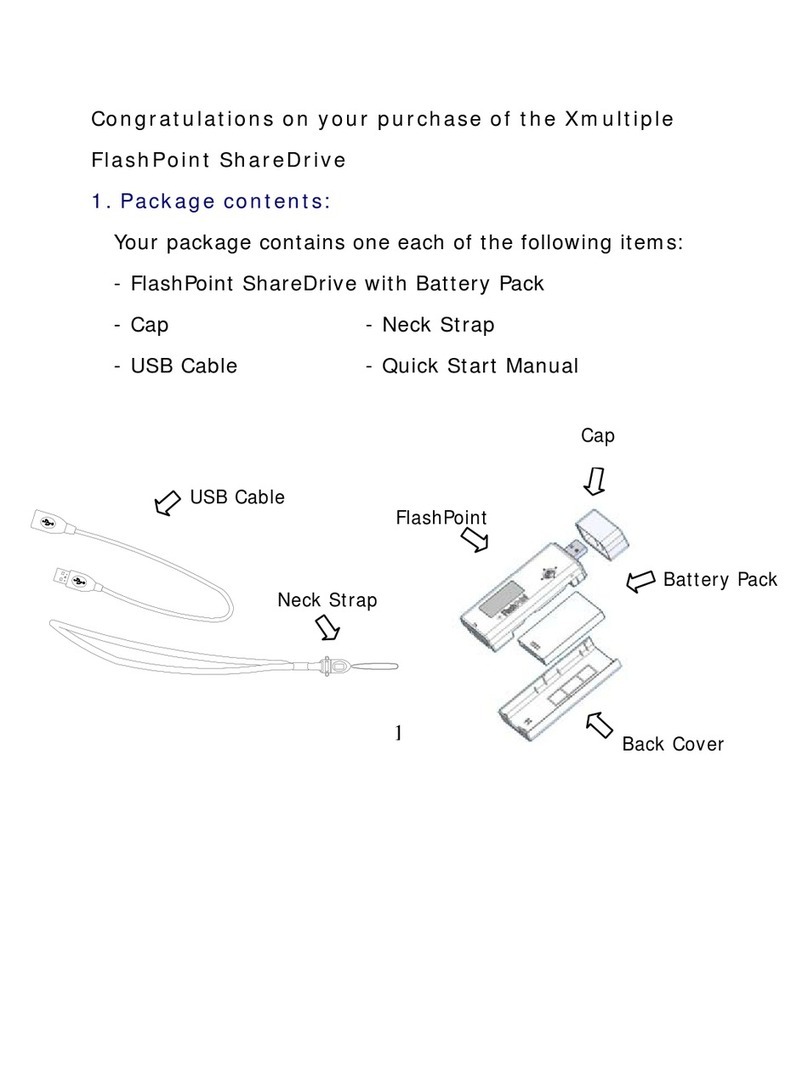
Xmultiple
Xmultiple FlashPoint ShareDrive quick start guide
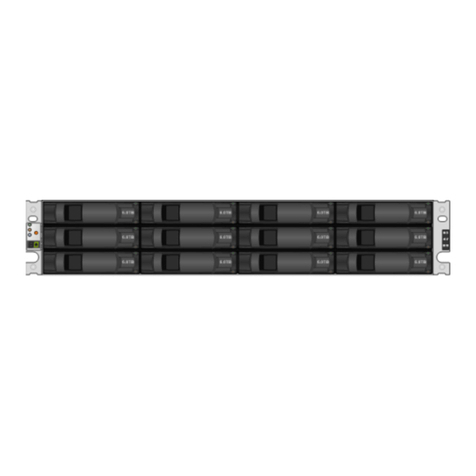
NetApp
NetApp StorageGRID Webscale SG5700 Series Hardware installation and maintenance guide
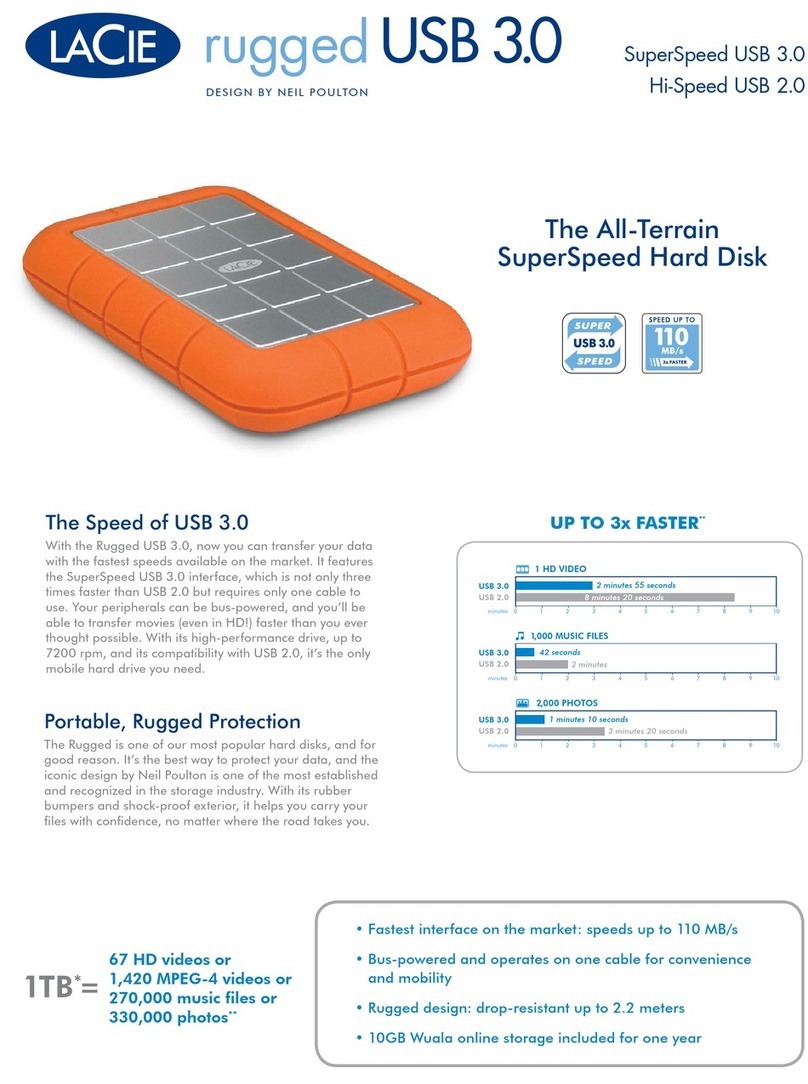
LaCie
LaCie 301930 Specifications
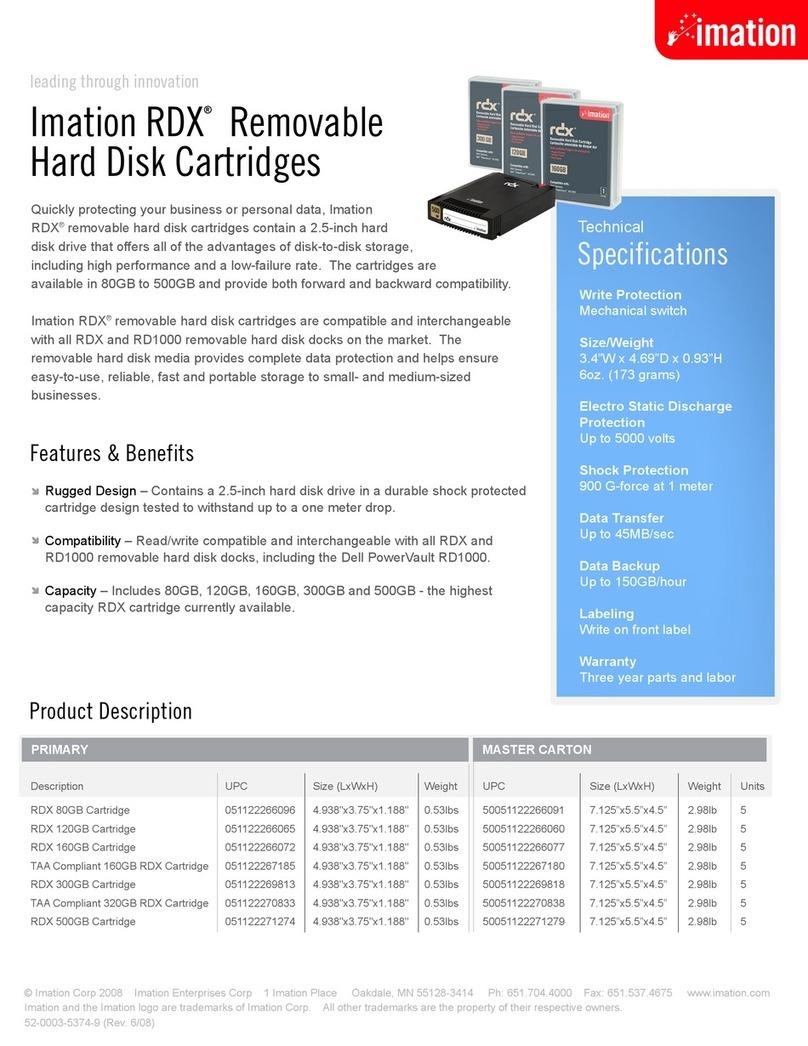
Imation
Imation RDX 80GB specification
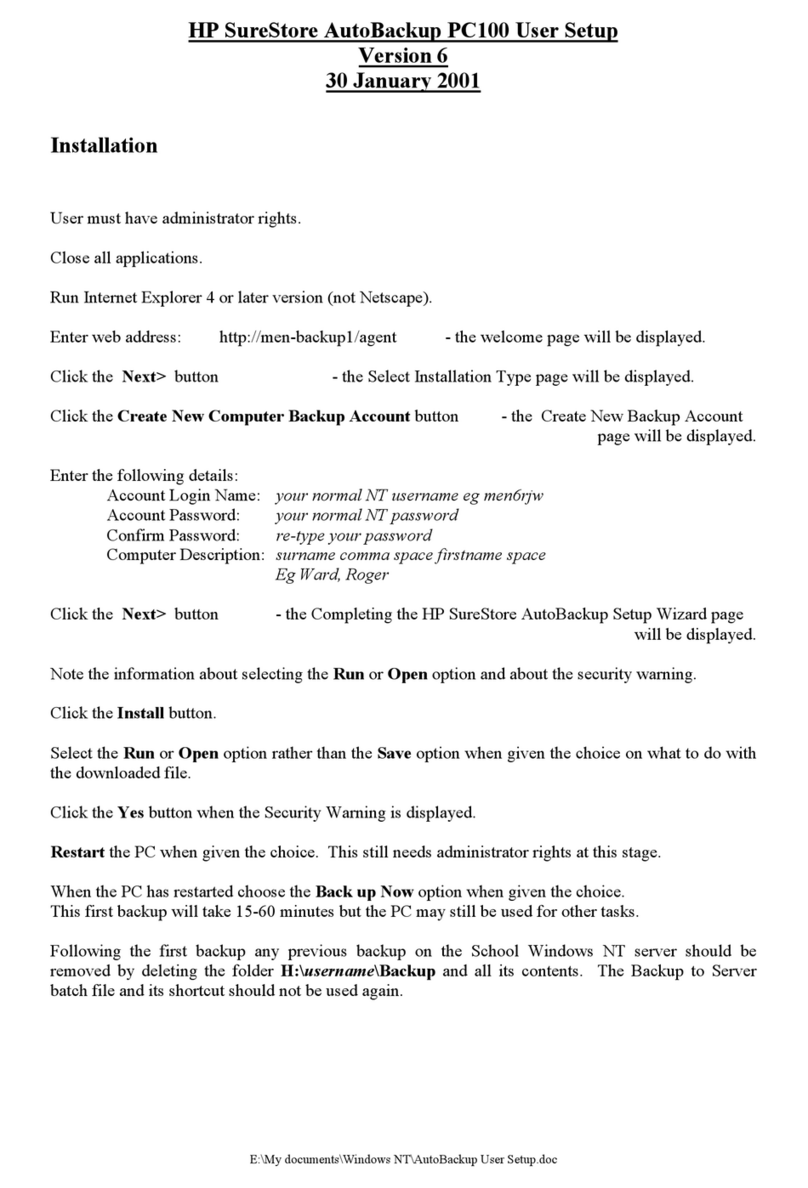
HP
HP SureStore AutoBackup PC100 User's setup guide
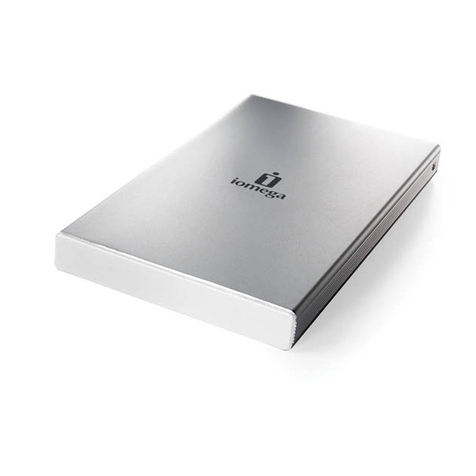
Iomega
Iomega Portable Hard Drive USB / FireWire quick start guide
